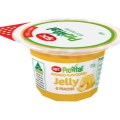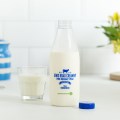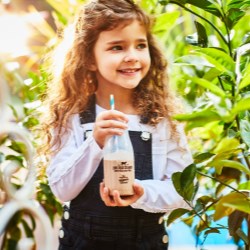If this is your company, CONTACT US to activate Packbase™ software to build your portal.


People do not know what they do not know; and those who did not attend the July meeting of the Australian Institute of Packaging meeting in Melbourne still do not know what they do not know. But those who attended know a lot more than they knew before. For instance they know that what you write in a marketing brief may well be the determinant in a judge's ruling.
Such was the case when one cigarette manufacturer gave a brief to "replicate as close as possible the competitor's package". This was just one pearl of wisdom imparted when Gwen Blake Managing Director of Boxer & Co together with Sharon Givoni, Principal Solicitor at Sharon Givoni Consulting, engaged a sizeable audience in the legal aspects of packaging.
Gwen Blake has recently published a book entitled Packaging a Punch which is a beginner's guide to creating packaging that stands out and gets purchased. Boxer & Co specialise in development of packaging for the food industry, and that segment of marketing was Gwen's focus.
In a first up pitch for packaging designers we were told that packaging recalls are not only time consuming and expensive but are detrimental to your brand. To give us the understanding to avoid such events a walk through the design process and the legal considerations at each point was presented.
The designer needs to sit down with the client and get to the heart of the needs. The designer will then have the basic understanding of the required outcome. It is a highly detailed process from concept to a saleable product.
A good designer will determine the target market, and then look at trends in that product segment. The placement of the product is very important for example, selling in a health food store against a shelf ready package for a supermarket. Where and what is the competition? We were advised that the shopper and the consumer are more than likely to be different people. For instance the person shopping may select a brand that the person to whom it is served dislikes.
The key strategy for a successful product launch is positioning and all of the emotive pressures that occur. Colour is one aspect of a pack that is likely to be a challenge particularly if the brand owner has a desire for a colour that is already in use for similar products. A good designer will present three or four concepts to their client and be able to debate fully any issues arising.
A "now you know" advice was that the designer owns the draft work including the copyright and the client has no right to current or future use. For instance if the initial offering becomes a high volume product the brand owner cannot produce another product using the same design without negotiating this with the design agency.
There are many hurdles in design development, most legal, that is a veritable minefield so it is best to have ongoing legal input. Like the ownership of the design, photographs commissioned remain the property of the photographer and this, along with the exact terms of trade and codicils to future ownership, will be detailed clearly on the accounts. Generally a licence to use the images will not be given until the account is paid in full. Experienced design houses will often be able to use images from companies that trade in such works.
Any claims made on the package, particularly in food products, have to be substantiated and cannot be deceptive. Even the typeface and font used is bound up in legal precedent. Gwen advised that the intellectual property is in the typeface not the font and it is worth creating your own font which will be registered to you alone.
The size and regulatory requirements of ingredients and other mandated advice is also a high order consideration. Just a glimpse of National Measurement Institute detail was enough to send people into apoplexy. It is known that many of the requirements of that body are not being met due to some of the complexities. For instance the description of mass cannot be shown as KG, Kg, kilos, gm, grammes, grm, MG, Mg, or Mgram but only as kg, g or mg.
Some examples of brand ownership were given. A restaurant was using the word Granola on a menu and the brand owner successfully had the chef cease using their trademarked name. Boxer & Co designed a package for Australian rice and was involved in debate about the use of wording and a competitor already having a similar brand on the market. But in the end was able to achieve the clients need with a simple descriptive change.
The nutritional information panel and the recently introduced thumbnail descriptors are both tied in to the Food Standards Australia regulations that are legally binding and are always under focus by more than just consumers.
The requirement for pharmaceutical packages knocks food into a cocked hat due to the health aspects. The package must have words that warn the consumer of potential hazards and how to administer the product. It also has to specify the dangerous goods classification and the detailed make up of the material. And that is before the directions for use are enunciated.
About this time we were ready for "a Bex and a good lie down" but were sparked back to attention when Sharon Givoni grabbed the microphone. Sharon is a regular contributor to institute events, and made a welcome return to Box Hill and her loyal followers. Her interactive presentation with sample packages and visual aids engaged folks in decision making that would normally be in Sharon's or another solicitor's domain. Interestingly the person who came to discuss the five main ways to protect packing had already packaged up a trademarked statement "Turn your ideas into assets™".
The five areas for discussion were:-
- Copyright
- Trade Mark Registration
- Reputation
- Design Registration
- Patents
A handout detailed the various aspects of each point of consideration rather than the brief summary below:
- Copyright: protects the visual elements on the package [e.g. Graphics, photos, logos, diagrams]
- Trade Mark Registration: are essentially brand names and logos, but can essentially be anything that acts as a brand including, words, logos, colours and the shape of the package itself.
- Reputation even if a trade mark is unregistered; it can be protected as a result of its reputation in the marketplace. This includes distinctive packaging and brands.
- Design Registration: protects the overall appearance or visual features of packaging.
- Patents: protect the ways things work. They protect inventors, including packaging related inventions.
So, with some guidance the assembled professionals from diverse disciplines and industries settled in to absorb the information that came from Sharon either by word of mouth or out of her dilly bag of samples. - Many of which reflected the self-confessed chocoholic!
There would not be many people who are not aware of Cadbury chocolate and the debates about the colour purple. Since 1996, brands have become five dimensional and apart from the pack trade mark, protection can be afforded to colour, shapes, sounds and scents as long as they are distinctive of your goods and services.
In essence a Trade Mark gives you a monopoly within the category the mark was registered for. Cadbury for example, has a monopoly on seven shades of purple over boxed chocolate and blocks. The Tiffany Box and the specific blue colour and the distinctive shape and graphics of Toblerone chocolate are registered and world renowned. But did you know that it is also possible to trade mark movement? Yes, true, the jumping person in a motor car adverts is trade marked! (Think Toyota, of course).
Not all trade mark applications are approved. Caplet was not as it was simply a combination of two generic words. On the other hand Werthers have approval for its very specific confectionery wrapping even though others use gold for caramels. If you can demonstrate that your pack is so distinctive that no mistake as to ownership will be made by consumers that will greatly assist.
You can only get protection from a trade mark if you are using it. The registration lasts for ten years and can be renewed perpetually, as long as the certain requirements are met. In other words the trade mark must be in use. Freddo Frog has had many reincarnations but all have been registered and so a stable of approved shapes and packages exist.
Two or three misnomers were addressed as Sharon brought an exciting evening to a close. There is no such thing as a global trade mark and brand owners (like McDonalds) need to register in every jurisdiction.
The issue of home brands was raised with the matter of almost identical graphics and package shape up for debate. Sharon advised that "close can work" as it has been deemed that consumers know that what is before them is either a long established brand or a new brand owned by the retailer.
Sharon also showed us examples of packaging designs that had been protected and stressed that the application for a design protection must be made before the design in put into the marketplace. Design registration protects the visual appearance of packaging and lasts for up to ten years. Patents, which protect packaging inventions that are totally novel and new in the marketplace must also be applied for before they are in the marketplace and last for 8 years for an innovation patent and 20 for a standard patent.
Both presenters indicated that caution is needed in all dealings with the legal aspects of packaging. Sharon's handout had a number of concluding tips. The poignant one would seem to be:-
"Some aspects of packaging will be protected and some will not - always seek legal advice."
Written by Michael B Halley FAIP, Reviewed by presenters.







.jpg)




























